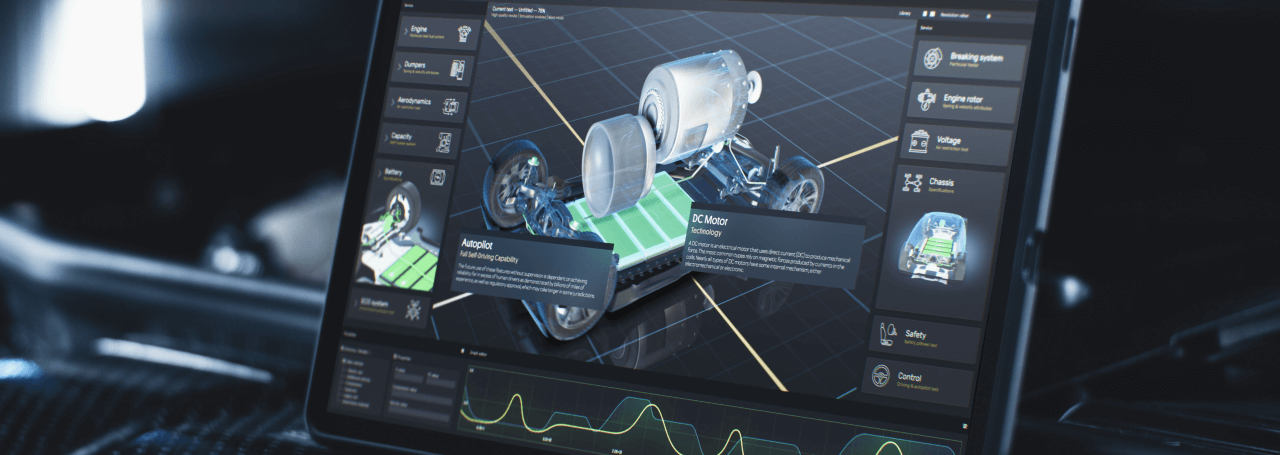- 1. Understanding the Technology: LCD and OLED Displays
- 2. Evaluating the Picture Quality: LCD Vs OLED
- 3. Analyzing the Color Accuracy: How LCD and OLED Compare
- 4. Delving into the Contrast Ratio: LCD and OLED Face-off
- 5. Assessing the Lifespan: OLED Vs LCD
- 6. Comparing the Energy Efficiency: Which is More Eco-friendly, LCD or OLED?
- 7. Price Comparison: Is OLED Worth the Extra Cost Over LCD?
- 8. Making the Final Choice: Which Display Technology is Right for You?
- Frequently Asked Questions
In the ever-evolving world of technology, the debate between LCD and OLED display technologies is a hot topic. As a tech enthusiast, I’ve often found myself caught in the crossfire of this debate, trying to determine which display technology offers the best visual experience, longevity, and value for money. In this comprehensive guide, we will delve into the intricacies of both LCD and OLED displays, evaluating their performance in terms of picture quality, color accuracy, contrast ratio, and lifespan. We will also assess their energy efficiency, comparing which of the two is more eco-friendly. Furthermore, we will discuss the cost implications of both technologies, helping you decide if the superior OLED technology is worth the extra investment over the more affordable LCD. Ultimately, our goal is to provide you with the knowledge and insights needed to make an informed decision on which display technology is the right fit for your needs. Trust us to guide you through this technological maze, as we explore the pros and cons of LCD and OLED displays.
1. Understanding the Technology: LCD and OLED Displays
When it comes to display technology, two of the most commonly used types are Liquid Crystal Display (LCD) and Organic Light Emitting Diodes (OLED). The fundamental difference between these two lies in the way they emit light. LCDs rely on a backlight to illuminate their liquid crystals, while OLEDs emit light through individual organic compounds.
Here are some key characteristics of each:
- LCDs are typically more affordable and offer better visibility in direct sunlight. They also consume less power when displaying brighter images, making them a popular choice for devices like laptops and smartphones.
- OLEDs, on the other hand, are known for their superior contrast ratios and ability to display true blacks. This is because each pixel in an OLED display is independently lit, allowing for precise control over image quality. They also offer wider viewing angles and faster refresh rates than LCDs.
However, it’s not just about the technology itself, but also how it’s implemented. For instance, the quality of an LCD display can vary greatly depending on factors such as the type of backlight used, the quality of the liquid crystals, and the overall design of the display. Similarly, the performance of an OLED display can be influenced by factors like the quality of the organic materials used and the efficiency of the pixel layout.
2. Evaluating the Picture Quality: LCD Vs OLED
One of the most critical factors to consider when comparing LCD and OLED displays is the picture quality. OLED displays are known for their ability to deliver deep black levels, which can significantly enhance the contrast ratio. This is because each pixel in an OLED display can be individually turned off, resulting in true blacks and a stunning level of detail in dark scenes. On the other hand, LCD displays use a backlight to illuminate their pixels, which can lead to lighter black levels and less contrast.
Another aspect to consider is the color accuracy and saturation. OLED displays generally offer a wider color gamut than LCDs, meaning they can display more colors and more accurate colors. This can result in a more vibrant and lifelike image. However, some users may find the colors on an OLED display to be overly saturated. In contrast, LCD displays often have more natural-looking colors, but they may not be as vibrant or accurate as those on an OLED display.
Finally, let’s discuss the viewing angles. OLED displays have a nearly perfect viewing angle, meaning the picture quality remains consistent regardless of the angle from which you’re viewing the screen. This is a significant advantage over LCD displays, which can suffer from color and contrast shifts when viewed from an angle. Here are some key points to remember:
- OLED displays offer deep black levels and high contrast ratios.
- OLED displays generally have a wider color gamut than LCDs.
- OLED displays have nearly perfect viewing angles.
- LCD displays often have more natural-looking colors.
- LCD displays can suffer from color and contrast shifts when viewed from an angle.
3. Analyzing the Color Accuracy: How LCD and OLED Compare
Delving into the realm of color accuracy, a critical factor in display technology, we find distinct differences between LCD and OLED. OLED displays are renowned for their ability to produce pure black levels, which results in a higher contrast ratio and vibrant colors. This is due to the fact that each pixel in an OLED display is individually lit, allowing for precise control over color and brightness. On the other hand, LCD displays utilize a backlight to illuminate their pixels, which can lead to less accurate color representation, especially in darker tones. However, high-quality LCDs with advanced technologies like Quantum Dot can compete closely with OLEDs in terms of color accuracy. In conclusion, while both technologies have their merits, OLED displays tend to have the upper hand in terms of color accuracy due to their unique pixel illumination method.
4. Delving into the Contrast Ratio: LCD and OLED Face-off
Contrast ratio, a critical factor in display technology, significantly impacts the viewer’s experience. OLED displays are renowned for their ability to deliver infinite contrast ratios. This is because each pixel in an OLED display is individually lit, allowing for true blacks when pixels are turned off completely. This results in a more vibrant and lifelike image quality, particularly in dark scenes or low-light environments.
- OLED displays can achieve infinite contrast ratios.
- True blacks are possible with OLED technology due to the ability to turn off individual pixels.
- OLED’s contrast ratio contributes to vibrant and lifelike image quality.
On the other hand, LCD displays rely on a backlight to illuminate their pixels. This means that they cannot achieve true black, as there is always some light leakage from the backlight. Consequently, LCDs typically have lower contrast ratios compared to OLEDs. However, advancements in LCD technology, such as Full-Array Local Dimming (FALD), have improved their contrast ratios, but they still fall short of the infinite contrast offered by OLEDs.
- LCD displays have lower contrast ratios due to backlight illumination.
- True black is not achievable on LCD displays due to light leakage.
- Despite advancements like FALD, LCD contrast ratios still fall short of OLEDs.
Overall, when it comes to contrast ratio, OLED displays outperform LCDs. The ability to control lighting at the pixel level allows OLEDs to deliver superior contrast, enhancing the overall viewing experience. However, it’s essential to note that the choice between OLED and LCD will also depend on other factors such as cost, longevity, and the specific use case.
- OLED displays deliver superior contrast due to pixel-level lighting control.
- The choice between OLED and LCD depends on cost, longevity, and specific use case.
5. Assessing the Lifespan: OLED Vs LCD
While both OLED and LCD displays have their unique strengths, the lifespan of these technologies is a crucial factor to consider. OLED displays are known for their vibrant colors and deep blacks, but they tend to degrade over time, especially the blue pixels. This can lead to a phenomenon known as ‘burn-in’, where static images are permanently imprinted on the screen. On the other hand, LCD displays have a longer lifespan and are less prone to burn-in. However, they may suffer from backlight failure or color degradation over time. Therefore, in terms of lifespan, LCD might have a slight edge over OLED, but the choice between the two ultimately depends on the user’s specific needs and usage patterns.
6. Comparing the Energy Efficiency: Which is More Eco-friendly, LCD or OLED?
Energy efficiency is a significant factor to consider when comparing LCD and OLED displays. OLED displays are often touted as more energy-efficient because they only light up the individual pixels needed for an image. This means that darker images will consume less power, making OLEDs potentially more efficient in specific use scenarios. However, this efficiency can be undermined if the majority of content displayed is bright or white, as this requires all the pixels to be lit, consuming more energy.
On the other hand, LCD displays use a constant backlight to illuminate their pixels, meaning their power usage remains relatively constant, regardless of the image being displayed. This can make them less energy-efficient when displaying darker images compared to OLEDs. However, they can be more efficient when displaying brighter or white images. The energy efficiency of both these technologies can also be influenced by other factors, such as screen size and resolution, which remain undefined in this comparison.
7. Price Comparison: Is OLED Worth the Extra Cost Over LCD?
Assessing the value of OLED over LCD requires a comprehensive understanding of both technologies. OLED displays are generally more expensive than their LCD counterparts. This is primarily due to the complex manufacturing process of OLEDs, which involves the use of rare materials. However, the superior quality of OLED displays, including their exceptional color accuracy, deep black levels, and faster refresh rates, often justify the higher price tag for many consumers.
On the other hand, LCD displays have been around for a longer period and are less expensive to produce. This makes them a more affordable option for the average consumer. Despite being less costly, LCDs offer decent performance and are capable of delivering high-quality images. They are also more durable and have a longer lifespan compared to OLEDs, which can suffer from issues like burn-in over time.
Tip: When deciding between an OLED and an LCD display, consider your specific needs and budget. If you prioritize picture quality and can afford to spend more, an OLED display may be worth the extra cost. However, if you’re looking for a more budget-friendly option that still delivers good performance, an LCD display could be a better choice. Remember, the best display for you is the one that fits your needs and budget.
8. Making the Final Choice: Which Display Technology is Right for You?
Ultimately, the decision between LCD and OLED display technologies boils down to your specific needs and preferences. If you prioritize energy efficiency and a lower cost, an LCD display may be the right choice for you. However, if you value superior contrast ratios, vibrant colors, and deeper blacks, you might find that an OLED display better suits your needs. It’s also worth considering the longevity of the display. OLED displays tend to degrade over time, particularly the blue pixels, which can lead to color imbalance. On the other hand, LCD displays are known for their durability and longevity. In conclusion, there is no definitive answer as to which display technology is better. It’s all about weighing the pros and cons and deciding which features matter most to you.
Frequently Asked Questions
What are the main differences between LCD and OLED displays?
OLED displays use organic materials that emit light when electricity is applied. They do not require a backlight and filters unlike LCD displays, which use liquid crystals to create images. This results in OLED displays having better contrast ratios and true blacks because they can completely turn off individual pixels.
Are OLED displays more energy efficient than LCD?
It depends on the content displayed. For bright images, OLED displays can consume more power than LCDs. However, for darker images, OLEDs can be more energy efficient because they can completely turn off black pixels.
Why are OLED displays more expensive than LCD?
OLED displays are more expensive to produce because the organic materials used are harder to manufacture and have a shorter lifespan compared to the materials used in LCD displays. This contributes to the higher price of OLED displays.
Which display technology is better for my eyes, LCD or OLED?
Both LCD and OLED displays have their own advantages. OLED displays have better contrast ratios and true blacks, which can be easier on the eyes in low light conditions. However, LCD displays can be better for viewing in bright conditions because they can display brighter whites.
What is the lifespan of an OLED display compared to an LCD display?
OLED displays generally have a shorter lifespan than LCD displays. This is because the organic materials used in OLED displays degrade over time. However, with normal use, both types of displays should last for many years.
DISCOVER OUR
Whitepaper
Achieve the perfect user-display interaction with the right Touch Sensor IC. Ever faced issues with phantom touch events or certification? Boost your R&D like a pro with our Whitepaper!



